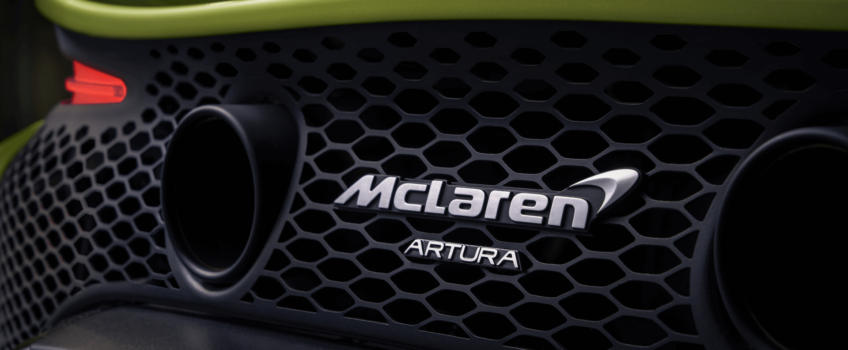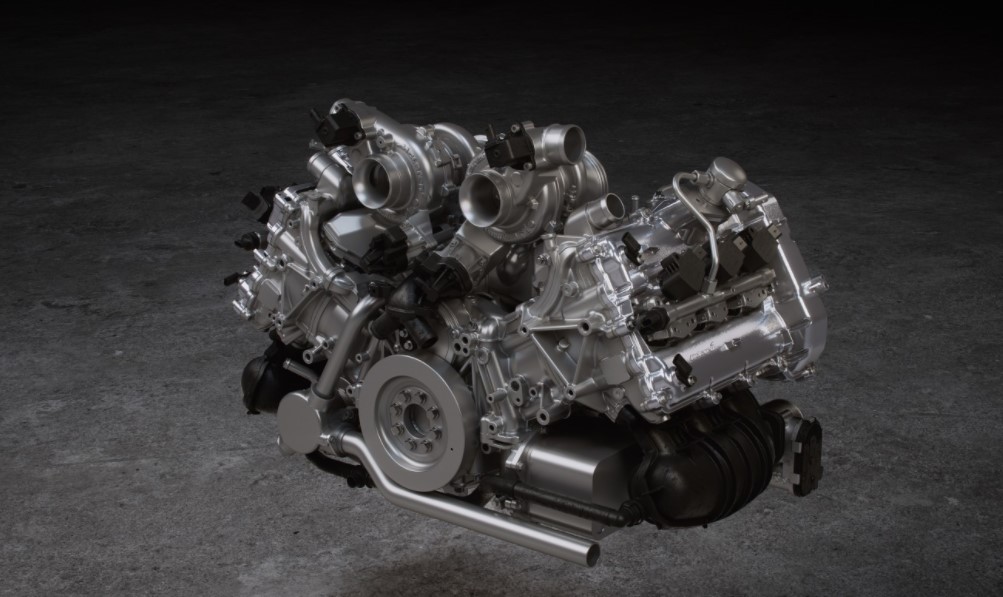
The automotive sector has seen some exciting cars in recent times but few are as stunning and technologically sound as the all-new McLaren Artura Hybrid. It is, in fact, the first completely new model the British automaker has produced in over a decade and the first hybrid since the McLaren P1.
The real race towards electrification starts with the new McLaren Artura which they refer to as its first High-Performance Hybrid model. Indeed, the P1 was first but it was a 375-unit special edition whereas the Artura is a full production car complete with a brand new engine and chassis.
The All-New McLaren Artura Hybrid
The McLaren Artura effectively replaces the Sports Series cars based around the 570S and sits below the 720S and 765LT models in the supercar range. Aside from the new stronger, safer and lighter platform called MCLA (McLaren Carbon Lightweight Architecture), they’ve introduced a host of new technologies.
According to McLaren, the MCLA will be built at its new facility in South Yorkshire which will be another highlight of British engineering. So, it’s a fresh start for McLaren with an entirely new platform but you wouldn’t say it from looking at the exterior.
McLaren Artura Sticking To A Winning Formula
The design is still super sleek, modern and keeps to the typical Stephenson-era McLaren formula. This includes the recognizable shape around the headlights, the big side air scoops, the “dihedral” and upward-opening doors.
The overall lines are indicative of the brand’s signature and like the P1, the McLaren Artura gets a perforated cover over the back end, although this one is a lot more refined and in laser-cut aluminium. Then there are the gills over the front wheel arches and a blacked-out engine cover behind the cabin, “spidery” alloy wheels rims and a pretty clamshell diffuser.
McLaren Arturo Engine Specs And Performance
In terms of the combustion part of the powertrain, the McLaren Artura has a new 3-litre twin-turbo V6. It weighs around 110 lb (50 kg) lighter and is more compact than previous V8s using a 120-degree “hot vee” configuration. It’s been optimised for high revs with an 8,200 rpm redline and a low centre of gravity.
On its own, the powerful V6 produces 577 hp with 584 Nm of torque which equates to around 193 hp per litre. Not surprisingly, considering McLaren’s engineering genius, this figure is close to modern-day superbike levels.

Power is pushed to the rear wheels through a new eight-speed transmission with close ratios taking just 200 milliseconds to switch between them. It does, however, not include a reverse gear which is where the hybrid tech comes in. The Artura, similar to the Lamborghini Sian, uses the electric motor to move reverse.
Combining ICE With The Electric Motor
The McLaren Arturo’s V6 engine is boosted by a 94 bhp from the plug-in hybrid system. A 7.4kWh battery powers the electric motor which means the Artura can go on electric power alone for up to 19 miles. The electric motor provides a good amount of torque at 225 Nm which gives the Artura peaks of 671 hp and 720 Nm when it’s pushing the limit.
According to reports, the torque from the electric motor improves throttle response while dropping official CO2 figures to 129g/km. It has a claimed average fuel economy of more than 50mpg which is astonishing for a car that goes from 0-62mph in just 3.0 seconds, 0-124mph in 8.3 seconds and reaching a top speed of over 200mph.
Planning For The Future With A Monocoque Design
Specially optimised for electrification, MCLA technology hints at further, faster electrified McLaren models in the future. It’s built to be lighter, safer and stiffer, with the addition of accommodating hybrid powertrains with crash protection for the battery pack and fuel tank.
The monocoque design on the McLaren Arturo is the first major chassis overhaul since the McLaren MP4-12C. The Artura features a wheelbase of 2.64m with minimal front and rear overhangs with a new multi-link rear suspension. In a first-ever for McLaren, they’ve also added a lightweight electronic differential.
The electric motor is a lightweight axial flux design which is another first on a series production car according to McLaren. It sits between the V6 and the transmission delivering high power and torque density from a small and lightweight package.
Interior Design, Features And Technology
The interior has a familiar feel for drivers of previous McLarens but it’s still stunningly simple, functional and focused. They’ve added 10-way adjustable heated sports seats for greater comfort while fluid-filled engine mounts isolate the cabin from vibrations. The McLaren Artura also has specially-designed Pirelli tyres with a vibration-reducing sponge to cut down on vibrations and road noise.
Hydraulic assisted steering means you get a maximum feel with a compact instrument panel that sits on top of the wheel. When you adjust the wheel, the instruments adjust with it which is just one of the many tech features on the McLaren Artura. The drive mode selector is also on the instrument panel where drivers can select comfort, sport, track or an electric-only mode.
Recommended: ‘Current And Future Automotive Manufacturing Technologies’
Final Thoughts On The McLaren Artura
The technology on the McLaren Arturo is certainly breaking new ground for the British carmaker with electrification forming a big part. It combines the best of both worlds with tremendous power, performance and efficiency, not to mention making it easier to use as an everyday car.
According to McLaren, the aim of making the Artura is “thrilling to drive, but easy to live with”. Judging from the looks, specifications, performance and features, this could be one of the standouts for some time to come.
PRV Engineering works closely with several industries including automotive, aerospace, defence, construction and rail. Please visit our website for more information on the wide range of products and services we provide. For more interesting articles from around the world covering engineering, manufacturing and technology, follow our blog.


 Mail:
Mail: 



